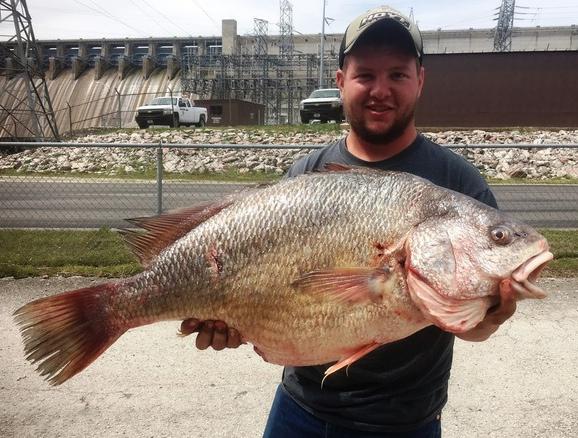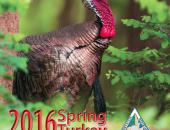Local News
Fisherman Takes State-Record Freshwater Drum
April 14th 2016 by Dee Loflin

REEDS SPRING, Mo. – The Missouri Department of Conservation (MDC) reports that Joshua Cole of Reeds Spring became the most recent record-breaking fisherman in Missouri when he shot a freshwater drum on Table Rock Lake using a bow and arrow. The new “alternative method” record drum taken by Cole on March 31 weighed 30-pounds, 15-ounces. It was 33 inches long and had a girth of 30 inches. He shot the fish around 10 p.m. about one mile from Point 10 on Table Rock Lake.
“I can’t believe I shot a state-record drum,” Cole said. “I knew I was shooting at a big drum, but I didn’t realize how big it was until we got it in the boat.”
Cole added that it took two arrows to get it in the boat.
“It really didn’t put up much of a fight with two arrows in it,” he said. “I’m just glad we got it in the boat with no problems.”
The new freshwater drum broke the previous alternative-method state record of 26-pounds, 8-ounces taken on the Lake of the Ozarks in 2008.
“March was a great month for catching record-breaking fish throughout the state,” said MDC Fisheries Programs Specialist Andrew Branson. “There were four new state records set in March. This just goes to show you that conservation makes Missouri a great place to fish.”
MDC staff verified the new record-weight fish using a certified scale at MDC’s Shepherd of the Hills Hatchery in Branson.
“Once my friends and I got the fish in the boat, I knew that it was a state-record fish,” Cole said. “This is by far the one of biggest fish I have ever caught in my life, and I still can’t believe it!”
Cole hasn’t decided what to do with the fish just yet, but his hopes are high to shoot something bigger.
“This was my first time out bowfishing this year, and I can’t believe I shot a state-record fish,” Cole said. “I’m so ready to get back out on the water and find bigger fish.”
Missouri state-record fish are recognized in two categories: pole-and-line and alternative methods. Bowfishing is considered an alternative method and consist of a bow or crossbow that shoots arrows attached to a string so that the fish can be retrieved after they’re pierced. Other alternative methods include: throwlines, trotlines, limb lines, bank lines, jug lines, spearfishing, snagging, snaring, gigging, grabbing, and atlatl.
Last Updated on April 14th 2016 by Dee Loflin
https://showmetimes.com/Blogpost/v4dl/Fisherman-Takes-StateRecord-Freshwater-Drum





